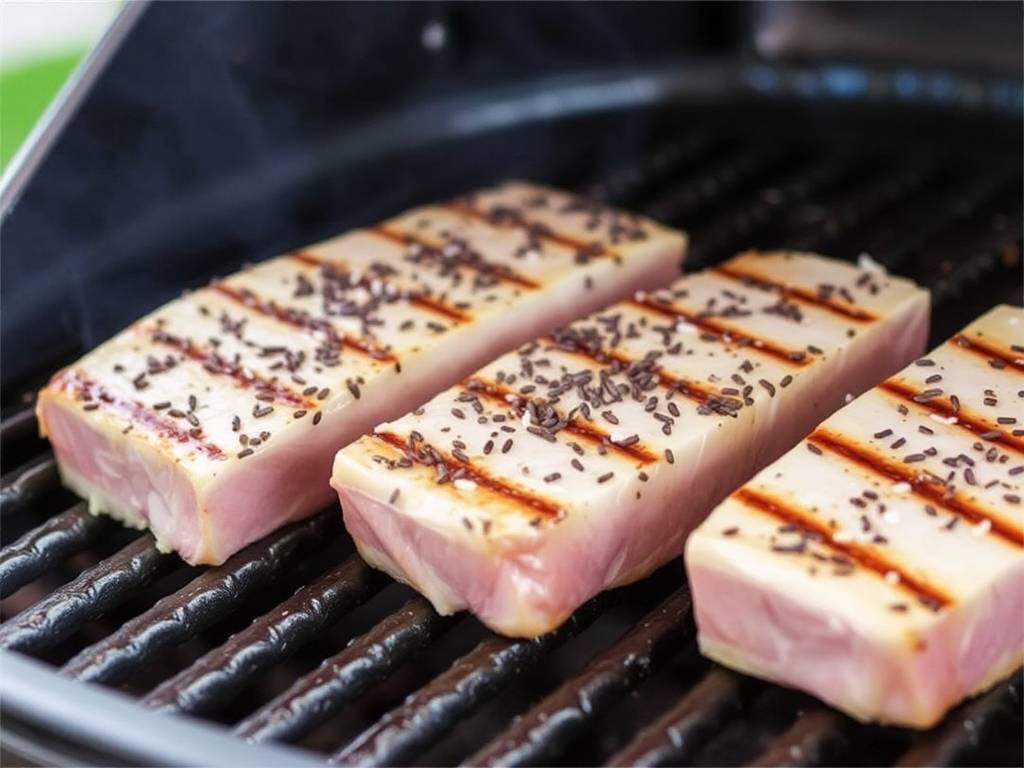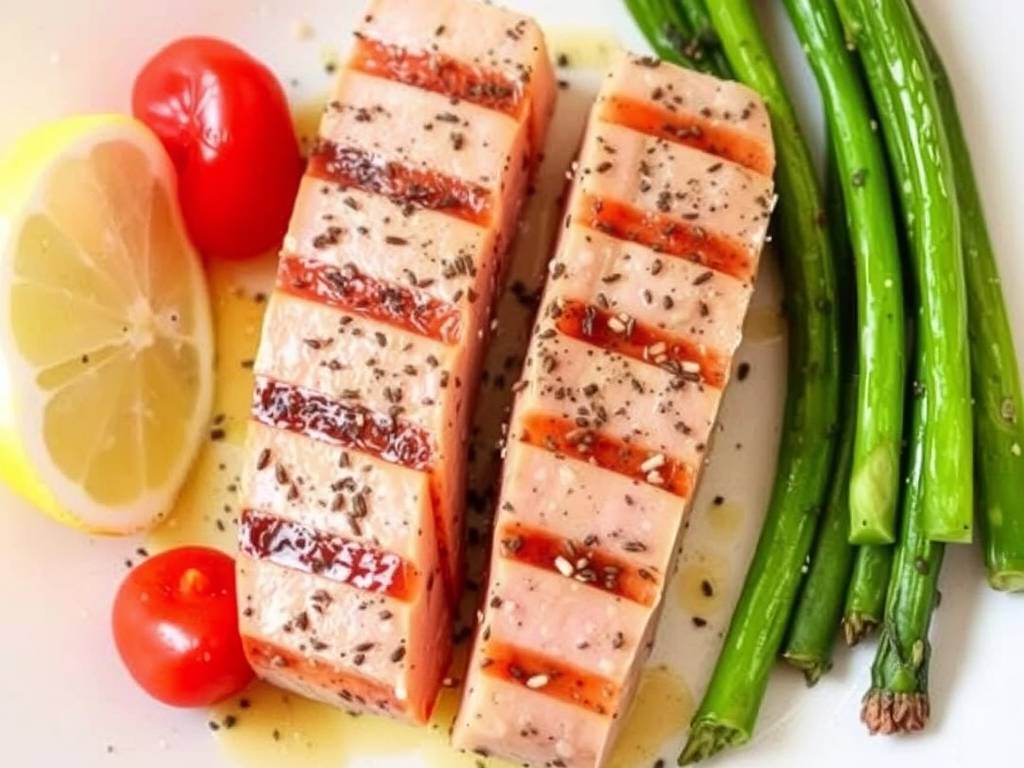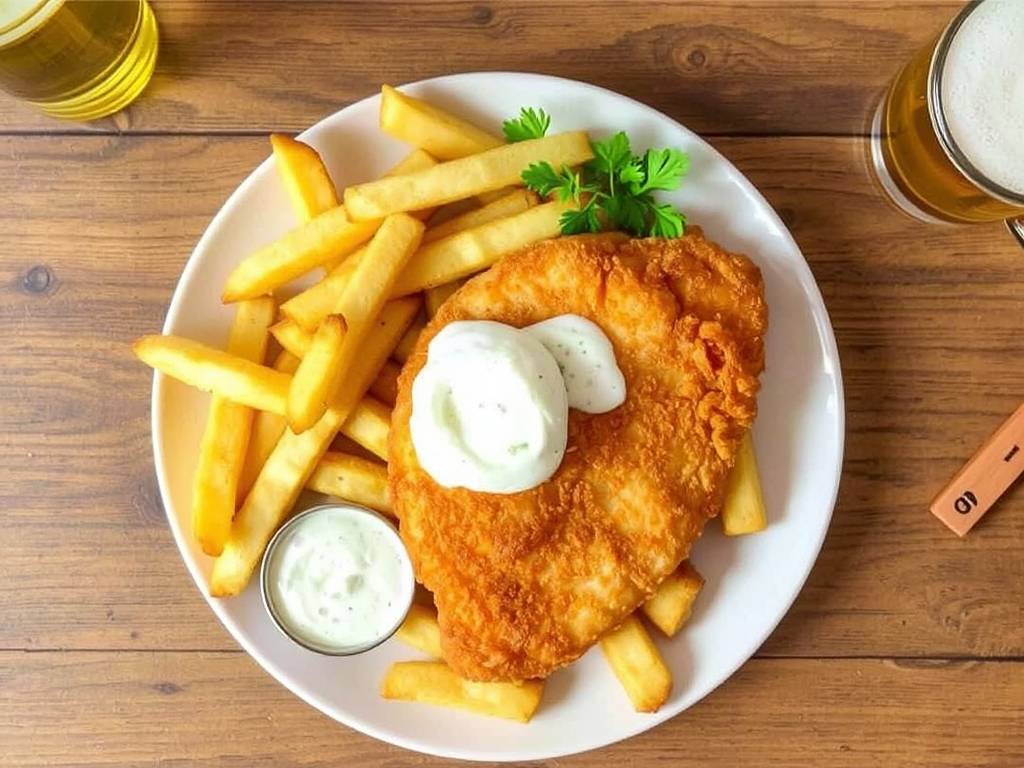The Ultimate Guide to Perfectly Grilled Tuna with Black Pepper and Salt
There's something almost magical about the combination of perfectly grilled tuna, a generous crust of cracked black pepper, and the simple, clean enhancement of sea salt. It’s a dish that speaks of elegance in its simplicity, where the quality of the ingredients and the technique of the cook take center stage. If you've ever been intimidated by cooking tuna at home, fearing you might overcook that beautiful, expensive steak, worry no more. This comprehensive guide is designed to walk you through every single step, from selecting your fish at the market to presenting a restaurant-quality meal on your dinner plate. We will master the art of grilling tuna with black pepper and salt together.
Let's start at the very beginning: the fish itself. The success of this dish is profoundly dependent on the quality of the tuna you choose. You are looking for a cut that is meant for high-heat, quick-cooking methods. The best options are Ahi (Yellowfin) Tuna or Bluefin Tuna. When you're at the fish counter, look for steaks that are a deep, ruby red color, appear moist but not wet, and have a firm texture. There should be no strong, "fishy" odor—just a fresh, clean scent of the ocean. Avoid any steaks that look brownish or have a rainbow-like sheen, as these are signs of age. For grilling, aim for steaks that are at least 1 inch thick, with 1.5 inches being ideal. This thickness is crucial for achieving a beautiful seared crust while maintaining a rare to medium-rare interior, which is the hallmark of a perfectly grilled tuna steak.

Now, let's talk about our two superstar ingredients: pepper and salt. This is not the time for the pre-ground powder sitting in your cupboard. For the black pepper, invest in high-quality whole peppercorns, such as Tellicherry, which are known for their complex, aromatic heat. You will be cracking these coarsely yourself. The larger, irregular pieces will create a magnificent crust and provide bursts of flavor that fine powder simply cannot. Similarly, your choice of salt matters. Flaky sea salt, like Maldon, is a fantastic finishing salt because of its delicate crunch and clean taste. For seasoning before grilling, a good coarse sea salt is perfect. The large crystals adhere well to the fish and help draw out just enough moisture to promote a superb sear.
Preparation is 80% of the battle. About 20 minutes before you plan to grill, take the tuna steaks out of the refrigerator. Allowing them to come to room temperature is a non-negotiable step for even cooking. A cold steak thrown on a hot grill will seize up and cook unevenly, leaving you with an overcooked exterior and a cold, raw center. Pat the steaks completely dry with paper towels. This is another secret to a great sear—moisture is the enemy of browning.
Now, for the seasoning. Drizzle a very light coat of a neutral, high-heat oil like avocado oil or grapeseed oil onto both sides of the steak. Olive oil can work, but its smoke point is lower, and it can impart a bitter flavor if it burns. Then, generously coat every side of the steak with your freshly cracked black pepper. Press the pepper into the flesh gently so it adheres. Don't be shy! Next, season liberally with your coarse sea salt. At this stage, you only need to season with salt and pepper. We want to taste the pure, unadulterated flavor of the tuna enhanced by these two simple elements.
While your tuna is coming to temperature, prepare your grill. For the best grilled tuna steak, you need two things: intense heat and a clean grill grate. Preheat your gas or charcoal grill to high heat. If using charcoal, build a hot, single-layer fire. You should be able to hold your hand about 5 inches above the grates for no more than 2 seconds. A searing hot grill is essential for creating that coveted crust quickly without overcooking the interior. Ensure your grill grates are impeccably clean and well-oiled to prevent the fish from sticking. A great trick is to fold a paper towel, dip it in oil, grab it with tongs, and wipe it across the grates.
The moment of truth has arrived. It's time to grill. Place your seasoned tuna steaks on the hottest part of the grill at a 45-degree angle to the grates to get those beautiful, professional grill marks. Now, here is the most critical instruction: DO NOT TOUCH THE FISH. Let it cook undisturbed for 1.5 to 2 minutes. You will see the sides of the steak beginning to change color from red to opaque. After 1.5-2 minutes, use a thin, wide spatula to flip the steak 90 degrees (to create cross-hatch marks) or to a new hot spot on the grill. Cook for another 1.5 to 2 minutes.
Now, flip the steak over to the second side. Repeat the process, cooking for another 1.5 to 2 minutes. For a perfect rare interior, the total grilling time for a 1.5-inch steak should be about 4-6 minutes. The tuna is done when the outside is seared and the inside is still red and cool in the center for rare, or pink and warm for medium-rare. The best way to check for doneness is by touch. A rare tuna steak will feel soft, like the fleshy part of your palm near your thumb when your hand is completely relaxed. A medium-rare steak will feel a bit more resilient. You can also use the knife test: make a small cut into the thickest part of the steak to peek inside. Remember, tuna is best enjoyed rare to medium-rare. Overcooking will make it dry and tough, similar to a well-done steak.
Once your tuna is perfectly grilled, the final step is just as important as the grilling itself: resting. Transfer the tuna steaks to a clean plate or cutting board and let them rest for 3-5 minutes. This allows the juices, which have been driven to the center by the heat, to redistribute throughout the steak, ensuring every bite is moist and flavorful. Just before serving, you can give it one final, light sprinkle of flaky sea salt to brighten the flavors.
Serving your masterpiece is part of the fun. You can serve the steak whole or slice it against the grain into ½-inch thick slices, which makes for a stunning presentation. This simple grilled tuna with black pepper and salt is incredibly versatile. It can be the star of a healthy grain bowl with quinoa and roasted vegetables, served atop a vibrant salad with a ginger-soy vinaigrette, or simply accompanied by grilled asparagus and a lemon wedge. The acidity from a squeeze of fresh lemon juice just before eating cuts through the richness of the fish beautifully.

By following this detailed guide, you are no longer just following a recipe; you are mastering a technique. You now possess the knowledge to confidently select, season, grill, and serve a tuna steak that will rival any you’ve had in a fine restaurant. The beautiful simplicity of black pepper and salt, when applied with intention and care, elevates the magnificent flavor of grilled tuna into a truly unforgettable meal. So fire up that grill, and get ready to impress yourself and your guests. Happy grilling






发表评论